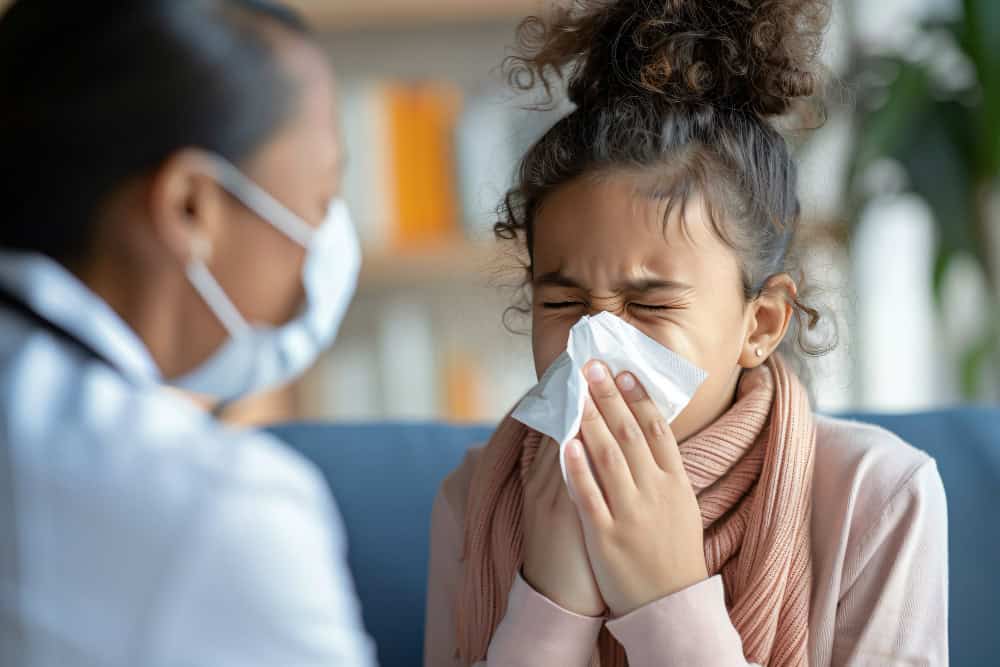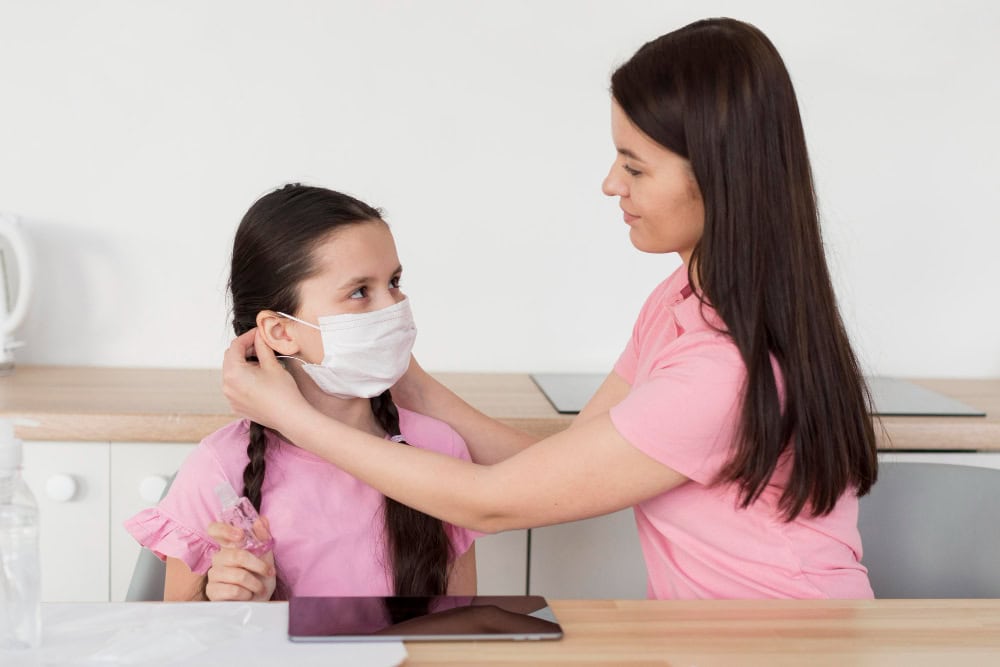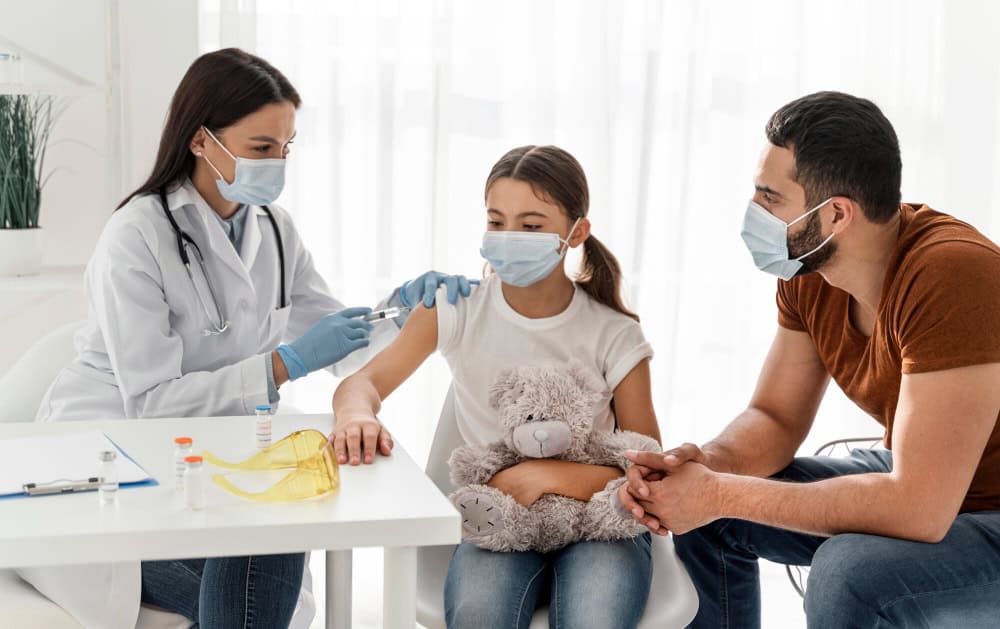
With a rise in cases across many parts of India, respiratory infections in children are making headlines again. Recently, doctors have observed a significant increase in respiratory illnesses among school-age children, infants, and toddlers. It has been noticed that cases of influenza and RSV (respiratory syncytial virus) in children are several times higher than in past years, with kids requiring hospitalisation due to prolonged symptoms and complications. [1]
Experts believe changing weather patterns, humidity, and crowded environments are the key factors behind this surge. Let’s check out and learn about these respiratory diseases and how to protect young lungs from recurring illnesses.
Protect your lungs with our most extensive respiratory care range.
What Are Respiratory Infections, And Why Are They Common in Children?

Respiratory infections in children are diseases that affect the respiratory system, mainly the lungs and airways, making it harder for them to breathe. These infections can be caused by any pathogen and often spread through sneezing, coughing, or coming in close contact. Children are more vulnerable to these infections because their immune systems are still developing. Respiratory infections in children often present with common symptoms, including difficulty breathing, persistent cough, high fever, and weakness. Understanding these infections is the first step towards preventing and keeping kids healthy.
Why Are Respiratory Infections On The Rise?

Some of the key factors causing the recent surge in respiratory infections in children across India are:
- Weather and unpredictable seasonal changes (humidity or sudden temperature changes) create favourable conditions for pathogens to grow easily.
- Close contact in schools, daycares, and homes makes it easier for infections to spread among children.
- Younger children often have underdeveloped hygiene habits, making it easier for viruses to spread through hand contact and nasal secretions.
- With an increase in air pollution, children can become more susceptible to respiratory infections.
Air pollutants can cause inflammation and worsen respiratory conditions. Concerned about how pollution is impacting your child’s respiratory health and your body? Get insights with the Pollution Risk Check Advance Package.
5 Tips To Prevent Respiratory Infections in Children

A common phrase we all know and have heard is that “prevention is better than cure”, as it plays a huge role in reducing the burden or the severity of the disease. Here are several science-supported strategies for families:
1. Follow Proper Hand Hygiene:
Studies show that good hand hygiene can significantly reduce the risk of respiratory infections in children. [2] Guide children to wash their hands thoroughly with soap before meals, after sneezing, coughing, or touching shared surfaces, and after returning home from school or the playground. This is one of the simplest yet most effective ways to stop germs from spreading. Hand sanitizers can also be used when soap and water are not available.
Looking for efficient handwashes and sanitizers? Explore our wide variety of products.
2. Ensure Good Indoor Air Quality:
Since children spend a lot of time indoors, clean air is important. Keep windows open for ventilation, reduce exposure to smoke, either from cooking or second-hand smoking. Make sure to clean toys, surfaces, or frequently touched items regularly to avoid any contamination. Invest in good-quality air purifiers or indoor plants that help improve the air quality.
Can’t find the right air purifier for all your needs? Visit our amazing variety of air purifiers.
3. Keep Vaccinations Updated:
Staying up to date on vaccinations can be a powerful defence against respiratory infections in children. Vaccinations like the pneumococcal and flu vaccines protect children against serious infections. Parents should consult their paediatrician to ensure kids are following the recommended immunization schedule.
Not sure which vaccine to take and when? Seek an expert’s help to know better about vaccination.
4. Maintain Physical Distance :
Teach and encourage your child to cover their mouth and nose and maintain distance from peers who are unwell, especially during flu outbreaks. Reduce their contact with crowded places like malls or public events during peak infection times. All these measures can lower the risk and help prevent it.
5. Aim for Balanced Nutrition:
A healthy diet plays a vital role in protecting children from respiratory infections. Foods rich in vitamin C, such as oranges, guava, and bell peppers, help strengthen the immune system, while vitamin D from eggs, fortified milk, and safe sun exposure supports lung health. Zinc from nuts, seeds, and lentils further boosts resistance to infections.
What To Do If Symptoms Appear

While prevention is the best option, don’t panic when symptoms appear; instead, take quick action and follow essential steps:
- Give warm fluids and ensure the child is well hydrated.
- Keep a close watch on warning signs such as fast breathing, chest indrawing, or difficulty in drinking and feeding.
- Consult a doctor if symptoms are severe or persistent, or if there is any difficulty in breathing. Talk to a Doctor Now!
Remember
The sudden rise in respiratory infections in children is just a wake-up call for all parents and caregivers. But with preventive care, balanced nutrition, good hand hygiene, and timely medical attention, the impact can be handled easily.
Recommended Reads
FAQs
Q. What are the treatment options for RSV vs influenza?
Respiratory syncytial virus (RSV) in children is managed with supportive care, while influenza may require antivirals along with rest and fluids.
Q. When should parents go to the hospital for RSV in babies?
If the baby has any breathing difficulty, dehydration, or bluish lips, then immediate hospital care is needed.
Q. How can respiratory infections be prevented in children?
Prevention includes hand hygiene, vaccination, avoiding sick contacts, and maintaining a healthy lifestyle.
References
1. Khan T, Das RS, Jaiswal A, et al. Epidemiology and surveillance of influenza, RSV and SARS-CoV-2 in children admitted with severe acute respiratory infection in West bengal, India from 2022 to 2023. BMC Infectious Diseases. 2025;25(1). doi:10.1186/s12879-025-11421-4
2. Younie S, Crosby S, Firth C, McNicholl J, Laird K. “Bye-Bye Germs”: Respiratory Tract Infection Prevention—An Education Intervention for Children. Education Sciences. 2024;14(3):302. doi:10.3390/educsci14030302
(The article is written by Sneha Jajoo, Intern, Clinical Health & Content, and is reviewed by Dr.Subita Alagh, Assistant Team Lead, Disease Content.)